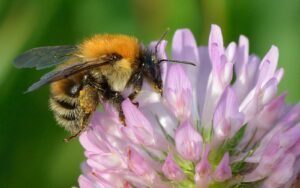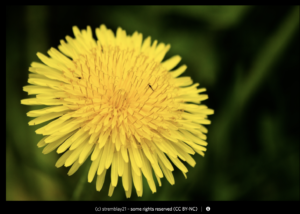DABB Data Bytes
Welcome back! We have finally seen the sun after what seems like a very long time! I hope everyone was able to enjoy the Migratory Bird Day this past weekend. It was a beautiful day! In continuation of No Mow May, I will be writing about plant species that are beneficial for the insects that are emerging. Last week, I wrote about the different pollinators found in the Driftless Area like the Bumblebee and Monarch Butterfly.
So, what defines a plant? Plants are photosynthetic which means that they make their “food” from the energy provided by the sun. There are an estimated 320,000 species of plants and most of them produce seeds. Fun fact: plants provide a substantial portion of the world’s oxygen with the ocean providing the most oxygen. Many plants produce grain, fruit, and vegetables which humans rely on as a source of food.
One plant species seen in the Driftless Area that is a good pollinator plant is the Red Clover (Trifolium pratense). It was observed 65 times over the last year on our iNaturalist page. Most of the time, these plants are mowed over and never given a chance to flower. When they are allowed to flower, they are a great pollen and nectar source for bees. This plant is native to Europe, Western Asia, and northwest Africa, but it has been planted in other continents like North and South America. The Red Clover has many uses including agriculture, food, medicine, and aromatherapy.
great pollen and nectar source for bees. This plant is native to Europe, Western Asia, and northwest Africa, but it has been planted in other continents like North and South America. The Red Clover has many uses including agriculture, food, medicine, and aromatherapy.
Another common pollinator plant species is the Dandelion (Taraxacum officinale). This species was observed 44 times in the Driftless Area. Most people treat their lawns so that Dandelions can’t grow, but they hap pen to be a great pollen source for different pollinators. This plant is known for its yellow flower head that turns into round balls of silver tufted fruits that are dispersed by the wind. It is commonly thought of as a weed, but the leaves, flowers, and roots can be used in medicine or food. Honeybees readily consume the pollen and will often lower their pollination activity on nearby fruit plants if there are dandelions.
pen to be a great pollen source for different pollinators. This plant is known for its yellow flower head that turns into round balls of silver tufted fruits that are dispersed by the wind. It is commonly thought of as a weed, but the leaves, flowers, and roots can be used in medicine or food. Honeybees readily consume the pollen and will often lower their pollination activity on nearby fruit plants if there are dandelions.
I hope this week’s post was helpful in teaching you all what kind of plants you may see in your own yard that are good for pollinators! There are many more, but these are often the most common pollinator plants.
Here’s another reminder to join our Nature Challenge on iNaturalist! The person who makes the most observations or identifies the most species will win a $50 prize! Second place winners get a $25 prize. The challenge ends on September 30, 2022, so be sure to sign up soon! See you next week!
Morgan J